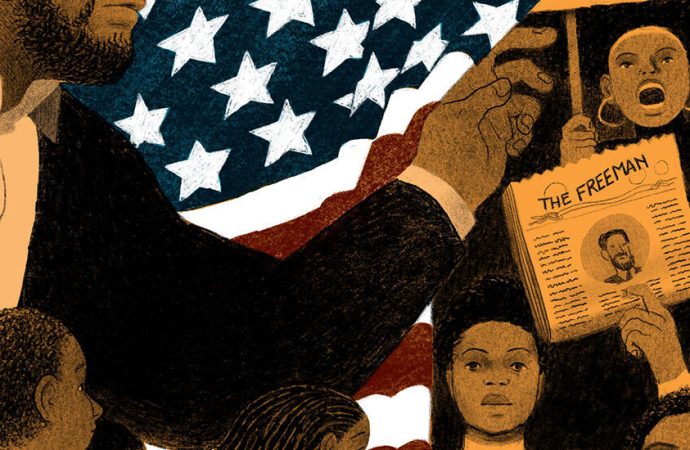Introduction: Anti-bias education is crucial for children of all ages. Identity-based biases lead to everyday forms of peer-to-peer harm. Sometimes the harm is verbal, sometimes physical, but always it is just the beginning for the ways young people practice how bias works in the real world. We need to help them understand that bias is a
Introduction:
Anti-bias education is crucial for children of all ages. Identity-based biases lead to everyday forms of peer-to-peer harm. Sometimes the harm is verbal, sometimes physical, but always it is just the beginning for the ways young people practice how bias works in the real world. We need to help them understand that bias is a product of history. The legacies and ongoing ways that power shapes identities who counts and who doenjang this isn’t just a problem in pre-K-12 education; anti-bias understanding is essential for the health of a fair and functioning multiracial democracy.
This article explores the crucial role of anti-bias education in creating a more equitable and just society. It begins by unpacking the concept of unconscious bias, highlighting its prevalence and negative impact on individuals and communities. The article then emphasizes the importance of anti-bias education for everyone, regardless of age, background, or occupation.
For students, anti-bias education cultivates critical thinking skills, challenges stereotypes and prejudices, and fosters empathy and understanding. This empowers them to advocate for themselves, challenge injustices, and build a more inclusive future.
In the public sphere, anti-bias education promotes respectful dialogue, dismantles harmful stereotypes, and equips individuals to recognize and counter bias in their own lives and communities. This fosters stronger social cohesion and reduces prejudice and discrimination.
Author

image by:cdn.theconversation.com
Erica Licht, MPA, MSc., (she/her) is the research project director at the Institutional Antiracism and Accountability Project (IARA) at Harvard Kennedy School Ash Center for Democratic Governance and Innovation. Her career has focused on collaborative community and institutional change programs globally.
For policymakers, anti-bias education provides the tools to design policies that are fair and inclusive, addressing systemic biases that perpetuate inequality. This contributes to a more just and equitable society, where everyone has the opportunity to thrive.
The article concludes with practical steps individuals and communities can take to promote anti-bias education and challenge bias in everyday life. Resources and organizations are also provided to help readers get involved.
The Hidden Threat: Unmasking Unconscious Bias:
- This opening section introduces the concept of unconscious bias, explaining its prevalence and potential harm. It sets the stage for the importance of addressing this hidden threat.
Why Anti-Bias Education Matters For Everyone:
- This section expands on the importance of anti-bias education, emphasizing its relevance to all individuals regardless of age, background, or role in society. It lays the foundation for the specific benefits in the following sections.
Empowering Students: Cultivating Critical Thinkers and Anti-Bias
- This section focuses on the benefits of anti-bias education for students. It highlights the development of critical thinking skills, challenging biases, and fostering empathy, all of which empower students to be active participants in creating a more just future.
Anti-Bias and Understanding in the Public Sphere:
- This section shifts the focus to the public at large. It emphasizes the role of anti-bias education. In promoting respectful dialogue, dismantling harmful stereotypes, and fostering understanding across diverse communities.
Create a More Equitable Future with Anti-Bias
- This section highlights the importance of anti-bias education for policymakers. It emphasizes its role in designing fair and inclusive policies, addressing systemic biases, and contributing to a more just and equitable society.
Taking Action: Steps We Can All Take to Challenge Bias:
- This section empowers readers to take concrete steps in their daily lives to challenge bias. It provides practical tips and actionable strategies that can be implemented by individuals and communities.
Conclusion: Unmasking a Brighter Future:
- This concluding section summarizes the key takeaways and emphasizes the positive impact of anti-bias education. In creating a more equitable and just future for all. It offers a hopeful outlook and encourages continued action.
Table:
| Who Needs Anti-Bias Education? | Why is it Important? | Benefits |
|---|---|---|
| Students | Develop critical thinking skills, challenge biases, build empathy | More inclusive classrooms, improved academic performance |
| Public | Recognize and counteract personal biases, engage in respectful dialogue | More equitable communities, reduced prejudice and discrimination |
| Policymakers | Design fairer policies, address systemic bias | More just and inclusive society, improved quality of life for all |
Conclusion
These headings create a logical flow, starting with the problem (unconscious bias). Then outlining the solution (anti-bias education) and its benefits for different groups. Before finally providing actionable steps and concluding with a positive vision for the future. This structure guides readers through the complex topic in an engaging and informative way.
















